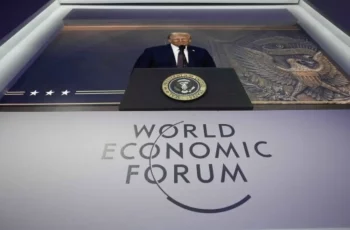
Donald Trump has launched a sweeping tariff war, targeting not just specific countries, but the entire global trade system. On April 2, which he designated as “Liberation Day,” Trump declared a minimum 10% tariff on all U.S. imports starting April 5, along with increased tariffs on goods from 57 countries. This move, referred to controversially as “reciprocal tariffs,” prompted immediate retaliation from trade partners and contributed to a sharp decline in the stock market. Although many countries have engaged in dialogue with the US to renegotiate trade agreements, it has affected citizens all over the world. But the underlying question is: can Donald Trump save the flawed US economy via these methods?
In recent years, the US has faced a perfect storm of economic challenges: soaring national debt, stubbornly high unemployment in certain sectors, and a widening gap between the rich and the poor. The US national debt has surpassed $31 trillion, driven by expansive government spending and military commitments. This mounting debt threatens long-term economic stability by increasing borrowing costs and limiting fiscal flexibility. Meanwhile, unemployment remains uneven across sectors; although overall joblessness has declined from pandemic highs, manufacturing and low-skilled labor markets continue to struggle. At the same time, income inequality has reached levels not seen in decades, fueling social tensions and raising questions about economic mobility.
The second Trump administration believes raising barriers on imports can protect American jobs, boost domestic industries, and perhaps even help address social inequality. The underlying assumption is that tariffs can shield American industries from unfair foreign competition—particularly from countries with lower labor standards or heavy subsidies—and thus preserve jobs in key sectors like manufacturing. By making imported goods more expensive, tariffs could incentivize companies to produce domestically, potentially reducing unemployment and supporting local economies. But the real answer is much more complicated.
There is extensive evidence of the fact that tariffs only lead to more tariffs. The most infamous example is the Smoot-Hawley Tariff Act of 1930. Enacted during the Great Depression with the aim of protecting American jobs and industries, it instead triggered retaliatory tariffs from other nations. Global trade plummeted by nearly 66%, deepening the economic downturn worldwide and leading to higher unemployment – not just in America but across many countries. The situation may be similar when it comes to the EU today. Donald Trump has threatened to impose a 50% tariff on all EU imports starting June 1st if there is no “progress” in talks over a new trade deal. EU trade Commissioner Maroš Šefčovič responded with equal frustration, saying that the EU is fully engaged and committed to securing a deal that “works for both”.
This is rather dangerous for American citizens. If no deal is concluded and tariffs are indeed put into place, the US will have to manage higher consumer prices and disrupted supply chains, while sustained manufacturing job growth is not guaranteed. Many Americans will face increased costs for electronics, clothing, and other goods—disproportionately affecting lower-income households.
It is indeed true that tariffs may provide temporary relief for certain industries like steel or aluminum. However, they come at a broader cost of increased inflationary pressures that erode purchasing power for everyday Americans. Retaliatory measures by trading partners escalate into full-blown trade wars that hurt exports vital to US businesses – especially agricultural products from states like Iowa or North Carolina – damaging rural communities already struggling with low incomes. In terms of addressing social inequality, tariffs are unlikely to be effective unless paired with domestic policies aimed at improving education, healthcare access, minimum wages, and social safety nets. Simply making imports more expensive does little to lift marginalized populations or reduce income disparities.
Free trade, on the contrary, can promote efficiency and innovation while creating jobs through specialization based on comparative advantage. The challenge lies in ensuring that economic gains are shared equitably through targeted investments in workforce development and social programs. Waging a tariff war risks undermining these benefits by disrupting global supply chains and increasing costs for consumers and businesses alike. Donald Trump may be acting like a “tough guy”, flexing US perceived economic muscles, but there are issues in the US economy that should be urgently addressed.










Comments